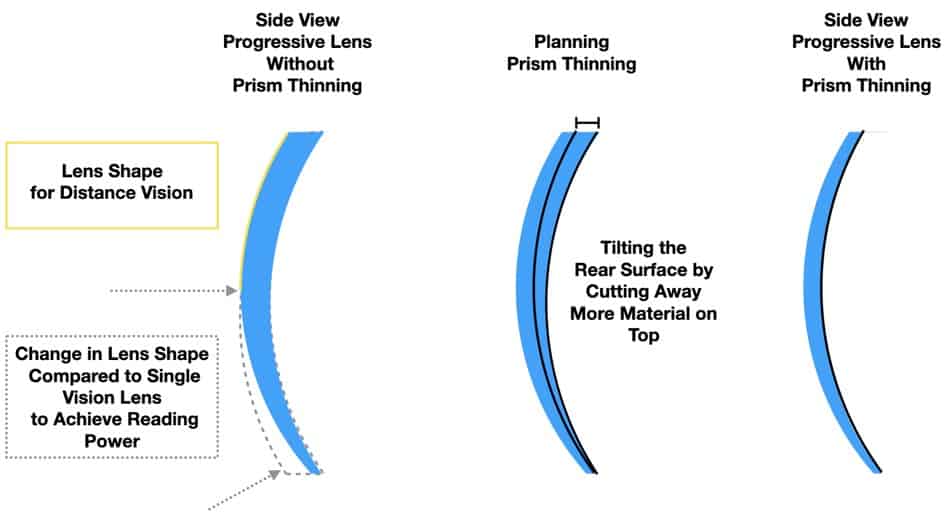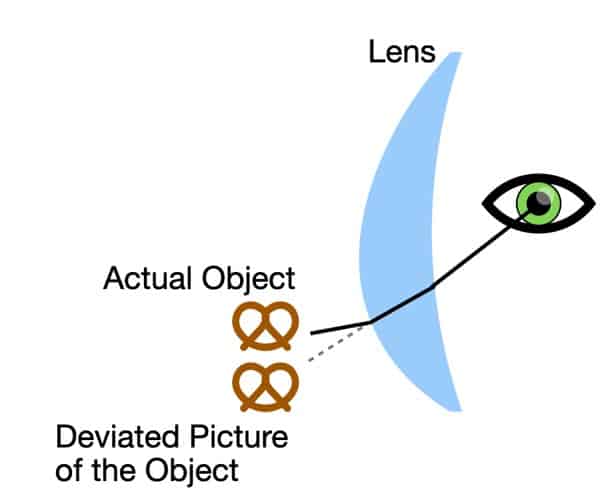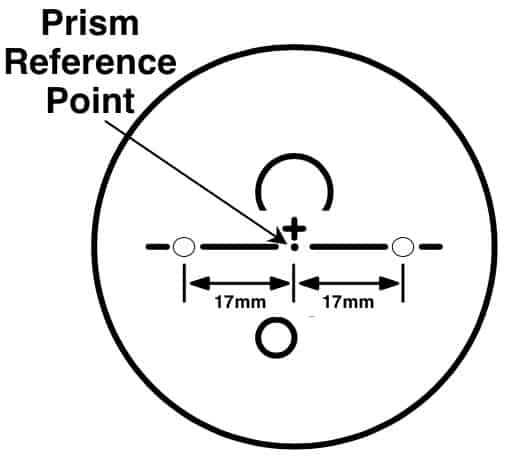Here in this article, you will learn what prism thinning is with an easy to understand explanation.
Prism thinning is a grinding technique used to make your progressive lenses higher and thinner. As you look on a progressive lens surface from the side the shape changes slightly from top to down. Only this way an increase in reading power can be achieved.
With this change in shape goes a thicker edge on top in combination. During the grinding process, the manufacturer then can slightly tilt the rear lens surface and cuts off lens material in order to produce thinner lenses.
Depending on your prescription your needed reading power and the length of the progressive lens you choose the manufacturer changes the amount of thinning prism for you to produce the ideal lens.

This applied thinning prism has to be equally powerful on both sides to avoid imbalances that could lead to double vision. Because when prism thinning was done the wearer receives a lens with a prism down lens power. In such a case the whole picture gets deviated up a little.
This is no problem for the wearer. Even with high Add values the amount of prism (which is around 2cm/m) built into the progressive lenses sets no problem for the wearer like in the study from J.E. Sheedy in 1987.
Even when higher prisms where applied healthy wearers had no problems. Although 5cm/m here in the study from Cathrine M Suttle and her team showed slight changes in posture. In such a case those high values would lead to less acceptance of the wearer. But the prism thinning in normal progressive lenses does not produce prisms that powerful.

The results of the prism thinning are especially visible in higher plus lenses or higher powers minus lenses. Prism thinning my be called different depending on the manufacturer where the progressive lenses are ordered. Essilor, for example, calls the feature “Equithin“.
How to Calculate Prism Thinning?
A rule of thumb says the thinning prism equals 60% up to 67% the power of your ADD value (reading power).
Thinning Prism = 0.6xADD
But this is a very rough way to calculate the thinning prism. A better job of course will be done by the manufacturer. Here when the grinding will be done as good as it gets many more parameters will be taken into consideration into the equation to get you the thinnest and lightest lenses.
Those parameters are:
- ADD value
- The shape of the chosen frame
- Where your lenses are centered in your chosen frame
- How long your progressive lens will be
- minimum lens thickness
This concept of prism thinning I showed in this article is exactly how prism thinning works in conventional progressive lenses. Today freeform progressive lenses have this feature automatically built-in. And the process looks a bit different in freeform progressive lenses. Because in most cases the progressive change in lens power that leads to the reading support is not only applied on the front surface.
In most cases, it is applied on the back surface or even on the front and the back surface. So when calculating the prism thinning with this formula keep this in mind in combination with the other influential factors I already mentioned.
Depending on the frame and how the progressive lenses with the individual prescription will be fittet in a frame base down or base up prism can be required in the progressive lenses to balance the thickness.
What Are the Benefits of Prism Thinning?
The benefits of prism thinning are more aesthetically pleasing progressive lenses and more wearing comfort to less weight. Due to the reduction in thickness, a bigger variety of prescriptions looks great in rimless or nylon frames.
Oftentimes progressive lenses can be produced 20% thinner and up to 25% lighter with prism thinning. The prescriptions do not need to very high to make this benefits happen. Depending on the combination fitting height, the length of the corridor and the ADD value this is a common scenario for a hyperbole with 2 D for distance vision.
When to Not Use Prism Thinning?
Attention should be placed when only one progressive lens gets replaced in a frame. If first the lenses had no prism thinning and the new lens has prism thinning built in the a prismatic imbalance will cause problems.
How to Check the Prism of Prism Thinning in Progressive Lenses?
The amount of resultant prism shows up when the optician places the progressive lens in the prism reference point and notes down the measured value for the right and left lens. If both lenses show the same amount of prism and base (the position) in the prism reference point no problems should come up here.

Because if the value is the same they equalize the deviation.
But if the customer was used to a vertical prismatic imbalance from his old progressive lenses it might be wise to build in the same amount of imbalance if the new progressive lenses seem not to be acceptable even every parameter has been rechecked.
That’s why it is always important for the optician to check the old glasses. Before the new ones get made.
This was my little article about prism thinning in progressive lenses. I hope you enjoyed it and found the exact information you were looking for.
I wish you a great day.
